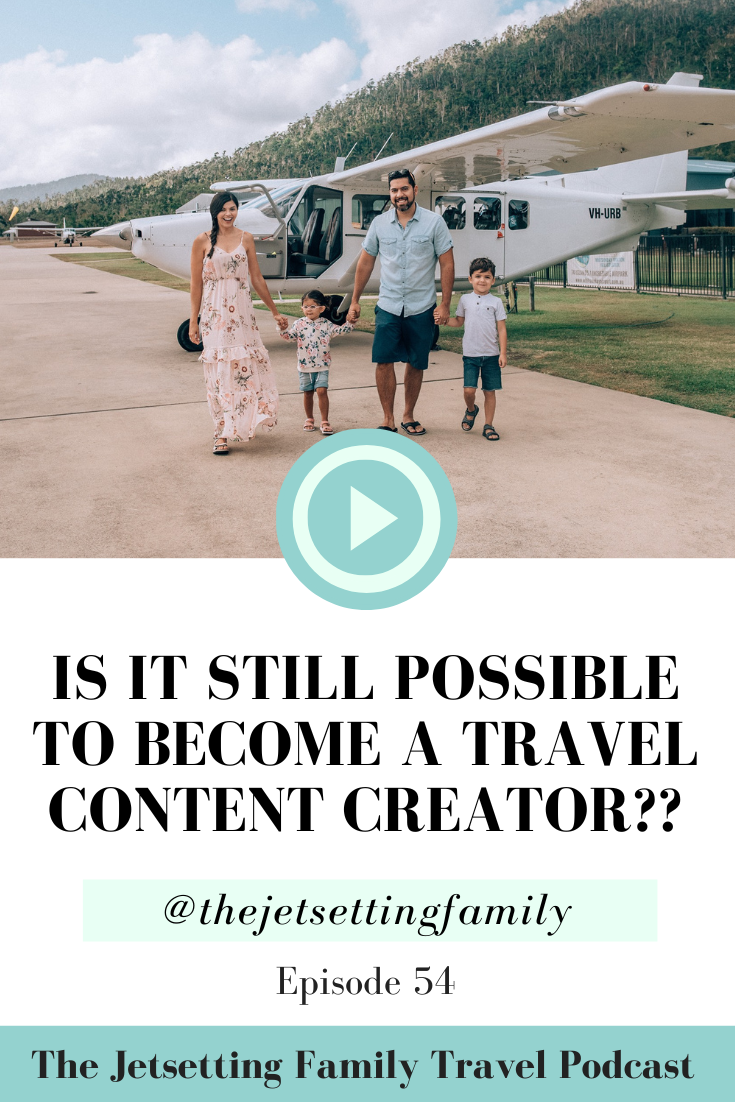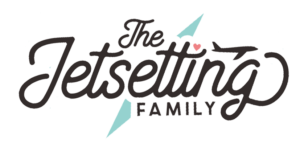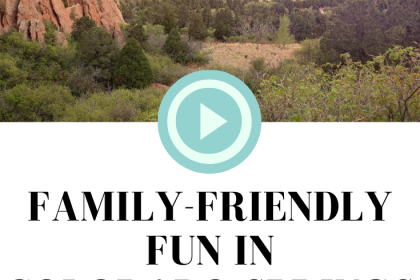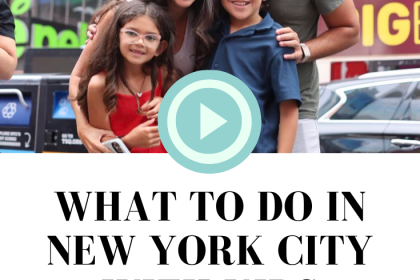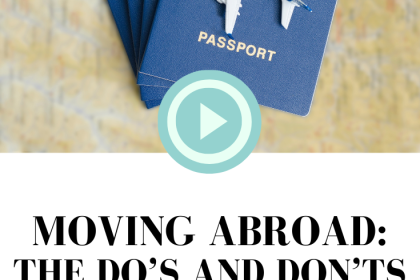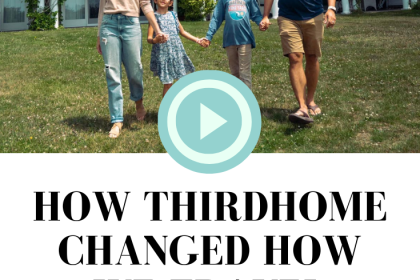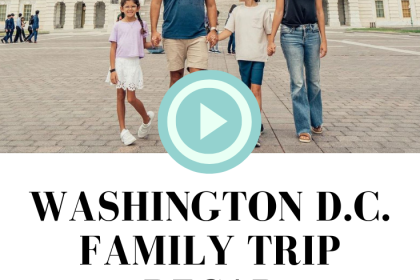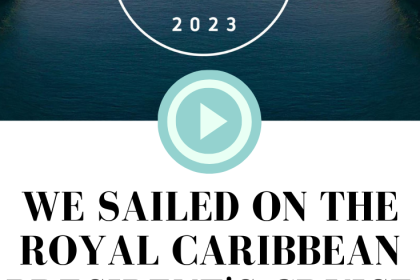This week we’re reflecting on our 5-year journey as travel content creators. We recap how we started, and what we would do differently if we had to start all over today. Check out this episode if you’ve ever thought about becoming a content creator, especially in the travel space!
Listen and Subscribe on: Apple Podcasts, Spotify, Google Podcasts
Resources
- Our course: The Art of the Pitch
- Cohley: A UGC and influencer marketing platform
- #paid: Another UGC and influencer marketing platform
Transcript
Rod: Welcome to the Jetsetting Family Travel Podcast. I’m Jess. And I’m Rod. And today we are doing a deep dive on the career path that really made all of our travels possible, which is content creation. I
Jess: Yes. We get asked all the time, what is it exactly that you do? How do you make money? How did you get started?
I mean, so many questions that we get in our inbox are related to our jobs. So how did we end up as the Jetsetting Family and getting income being content creators? Well start from the beginning. Way back when Rod was active-duty Air Force. Yep. He was working as a teacher at the Air Force Academy. And at that point in time, I had done accounting prior, but I was a stay-at-home mom.
I had my two little kids and I think we had built what we thought was everything we wanted. We had like the house we wanted, Rod had a really stable job. But we didn’t have the freedom we wanted. We wanted a lot more time for Rod, especially to spend with the kids. We wanted to be able to travel more.
We just had a different set of priorities that weren’t being met despite, like career-wise being where we wanted to be. And so we kind of decided to think. Well, what could we do differently and how can we make our priorities really what we actually do prioritize and base our life around? And so we chose for us that like our number one priority was to have freedom to work from anywhere in the world, which led to kind of deciding like, well, how do we do that?
And we came back to the skill of photography because when Santi was born, I was hiring a really good photographer. Her name was Hope. She had Hope Ann Photography for all of Santi’s photo shoots, and she was moving, she was military as well, and I was also spending a lot of money on pictures. So kind of decided, you know, maybe if I learn how to take photos myself, we won’t have to spend money on photo shoots.
So while being a stay-at-home mom, I really picked up the hobby of photography and Rod and I kind of decided to hone in on that.
Rod: Yeah, and I think from that flexibility standpoint, we didn’t hate our careers. Right? I mean, maybe Jess, you didn’t like accounting very much, but for me, I was, you know, I appreciated the Air Force. It was a great job. I got to do a lot of cool stuff with aerospace engineering and with teaching, but we didn’t have that flexibility that we really, really desired. So this was back in 2017, when our kids were, what? Santi was five, Nora was two, maybe one, turning two. And we started thinking about how can we design a lifestyle that is going to allow us to, one, spend more time together.
Two, be able to choose our own schedules and three, or really most importantly, making li make a living out of it. So that’s when we started thinking of, all right, what are some skills? What are some things that we can pitch out or that other companies could find value in.
And that’s when, as Jess mentioned, we got into photography and our story of how the Jetsetting Family started really started back in Colorado Springs where we had a new hotel that is getting built in the area and that was the Great Wolf Lodge. And the Great Wolf Lodge was having their grand opening, they were revealing their wintertime festival and we thought, okay, well this might be an opportunity to get something going and see if we can take photography or, you know, shoot content or, you know, work with that company on their launch. So we sent an email to some PR team or to like an info page somewhere, and uh, we just sent it out.
Jess: We, honestly, I never expected them to say yes or even reply. I’m like, we are this little family. We don’t have a website. I had just started posting on Instagram, but I sent them a sample of some of the photographs that we had taken in the past.
And we pitched.
Rod: Yep. And we got a response a few days later. We’re like, what? I remember this very distinctly because it was on a Friday evening that they got back to us and they said, oh, that sounds interesting. We’d love to host you. Can you send us your website so we can get an example of like your work?
And at that point we did not have a website. We were just putting all our stuff on Instagram and that weekend we started putting together our website, put in a few blog posts, linked it to our Instagram account, put some photography on there. We didn’t sleep guys. Yeah, so we 48 hours of just straight up hustle of like, all right,
Jess: How do we build a website?
Rod: This, this wasn’t even something paid, and we were just hoping that they would host us at a place where we already lived, just so we can say that we’ve worked as photographers or journalists or, I don’t know. So
Jess: it was, it was one to get an experience of like, okay. If someone actually hosts us, what does that entail?
Like we had no idea. I back then didn’t know, like I didn’t pitch a certain amount of photos, a certain amount of posts. It was just kinda like, hey, I’m this local photographer and I’d love to go to your hotel with my family not knowing anything about the industry. And we spent the entire weekend Rod primarily learning how to build a website.
And we built it and we sent it back to them.
Rod: Yep. Sunday night it’s like, all right, here’s our website. They got back to us and they’re like, okay, cool. Here’s your VIP passes to the launch. You can stay with us for two nights and you get the, the extra package where you can experience all of the stuff for free.
And we were just like, yes, it worked. I don’t know how much they actually looked at our website, but I think that that just gave us that like spark that we wanted and we needed to show that all right, there could be something here.
Jess: Yes. And I am a very impulsive person, so I was like, look, Rod, they hired us.
Let’s go and Rod’s the planner and he’s the more. I don’t know, thought out member of our family. Yeah. And he was like, okay, but we don’t really know if one, this is repeatable. We don’t really know. We just didn’t know a lot of things. We were very naive. I feel like back then Instagram, there were influencers out there, I guess, or content creators, but it wasn’t like it is today by any means.
Right. And for me, I kept saying, well, there’s this family babe, the Bucket List Family, and somehow they make this work. Granted, they had like, millions of dollars to fall back on, right? We did not, but we were like, if they’re getting hired, maybe we can too. So Rod told me, he’s like, I can’t leave the military yet.
We need a plan. I want you to approve that you’re dedicated. So I want you to grow the Instagram page as much as possible over the next six months. And then also try to see how many jobs can we actually get at local places and back then, when I say jobs, these were unpaid jobs. They were more
Rod: exchanges, collaborations, exchanges of, we’d give ’em photography or we’d write a blog post for them in exchange for staying at their place for free.
Sometimes the meals would be included, sometimes not. But going back to, back then, I was a very risk averse person, and I think the military drilled that in me just because after 10 years of being in this bureaucracy where you’re having to go through all these rules and you have to make sure that everything is safe and all of that.
I was, I, I was very scared, I think was a word of the unknown of what that would entail, of not having a steady source of income, of making a wrong decision or making or feeling like we made a mistake. Because once you leave the military, you can’t really go back easily into an active duty. So it was very much.
A big transition point for us, where I wanted to make sure before we made that decision, it was more thoughtful and we had some backup plans and ideas as to how we would make it work, if we needed to get jobs in afterward or all of that. So, that’s where that came from.
Jess: Yeah. So during these six months Rod’s risk averseness was like, I don’t know, let’s see what we can do.
I spent those six months because he was working full-time and traveling quite a bit, pitching local Colorado Springs places. So if you want to be a travel content creator, don’t think you have to go to all these expensive places and. Spend money on flight. Start local. I pitched the zoo, I pitched there was like a glamping place.
There was just a lot of local places that I was pitching to see like, hey, what can we do on the weekends? Rod’s family’s from San Diego and so we went out there to visit his family and I took that time. It was the first time we got hosted by a Hilton in San Diego. We were featuring their ice skating rink outside.
We got hosted by Lego Land, the San Diego Zoo. And so I kind of. Feel like during,
Rod: we got free tickets to Disneyland too. During
Jess: this six months, I kind of proved to Rod. Okay, well I can’t make money yet, but I can cut our expenses drastically. Like now we’re at the point where I had built the resume up enough that like when I would pitch hotel brands, I’d say we have partnered with San Diego Zoo, Lego Land, Disneyland, Hilton, Great Wolf Lodge, and I had like photos from those places.
Every time that we would go and we’d collaborate with someone, I’d ask them to review us or to leave like feedback. Yeah. So then I started to have a review from different managers, and then I was very conscious about every time I posted on Instagram. Back then, I tried to be loyal to certain brands. So I remember back then I was wearing a lot of Toms, a lot of Old Navy.
You were wearing a lot of Underarmour. Underarmour, yeah. And so I try to pick certain brands that like we each were loyal to and I would tag them in everything and I would tag everywhere we went in everything. And I made some mistakes along the way because we teach in our course, like, don’t just give rights to photos to people.
You need to charge them money for that. But at the beginning, I’d sometimes get an email from Toms, like, Hey, can we use your photo? Or hey, can we feature it? And I. You know, there were times that Tom’s, Airbnb even would feature our photos on their Instagram and they’d tag our account. That was something I required, like, please put the Jetsetting family, took this photo, giving us credit.
And even though those weren’t jobs, I use that to build our resume as well. Like featured by Airbnb, featured by Tom’s, featured by, yeah, whatever the hotel was important, the Marriott. And so even though they weren’t really jobs that we had lined up before going, it was a great way to fill the resume because it wasn’t a lie.
We were featured by these companies. They utilized, they liked our images enough to utilize them on their social media page. And so I really spent that first six months to a year just building the resume. And that’s when we decided if we sell all of our belongings, sell our home, or we actually ended up renting our home because the market wasn’t great to sell at the time.
If we sell all of our belongings inside of it, we sold a car, we sold like everything. Rent out our home. Even though we wouldn’t make money at first, we didn’t know what our revenue potential would be. If we could cut our living costs down substantially while having this like pocket of money we’d saved up.
Maybe we could last. What was our goal at the beginning?
Rod: Six months. We saved. We saved, saved for a year, and we were hoping that it would’ve lasted at least six months. No. Yes. It
Jess: was about six months to a year. Yeah, it was about six months. We were hoping to make it right, because we really weren’t sure like.
Outside of Colorado and San Diego, like what are we capable of? And so we kind of hit the road thinking maybe we can turn this into a business, but if not, at least we have six months to a year of fun adventures and we’ll just start life back over, right?
Rod: So that when we got started was five years ago. And one of the questions that we get a lot really is, Is it too late for me to start as a travel content creator? And I think that the really interesting context here is. We started and the industry back then was really young. There wasn’t a lot of defined criteria for what brands are looking for.
There was only really Instagram, maybe Facebook. There were not even Instagram stories. There’s definitely no TikTok. Right. I think in the past five years there’s been a lot more definition to what this. Quote unquote right here with wiggly fingers. Career path is, but I guess my question to you, Jess, is would you still recommend content creation and travel as a viable career path?
Is it still possible? And if so, then what would you recommend to somebody that is looking to get started?
Jess: I still think it’s a very possible career path for people. I think actually now it’s become easier because back then it was proving to brands like why you added value, and I think brands now utilize influencers and content creators so, so much.
They know it’s like. Probably the most valuable way for them to market. So it’s like before some brands didn’t even know like, why are you emailing this? This is so bizarre. And now brands expect that. I think what’s awesome about it too is back then you kind of did have to have a following to some degree.
We started with a really small following, but you had to have a following or a website or a blog or podcast or whatever it may be, to really get them to open that door for you. And now, there’s something called user generated content, UGC content that’s become more popular thanks to TikTok. And now it’s on Instagram.
I think it’s always been around, but it’s definitely, like Rod said, more defined where like you could have zero followers, but if you’re an amazing photographer, you could pitch a brand and they might want to use those photos for their website, for their marketing campaigns. And you can actually get jobs just pitching your photography without having a following at all.
You’re just selling the rights to your photos, which that’s become way more popular, which is a bigger door of, it’s an easier barrier to entry. I think with TikTok and reels, viral videos are bigger now than ever. You’ve seen some accounts that, like for us it was very, I think it was easier to grow Instagram back in the day in the sense of slow, steady growth.
Mm-hmm. You could grow and that’s become harder, but you see accounts now go from 10,000 to 200,000 followers overnight because of one viral video. And so I think there’s just a lot more opportunity there. I still look back though at how we did it. And still to this day would recommend that people start local or start by capturing your vacations.
If you already have a trip planned, treat it like a job. Make photos from that. Take beautiful images that you can put in your portfolio. Yeah, pitch local places. So build a resume in a portfolio and always get reviews of whatever you’re already doing in life, so you’re not putting extra money or expenses into kind of getting that proof that you offer value to a company. But I do think it’s possible. I think, you know, we left without knowing if we’d ever make money from it, which I think unless you do have a savings, I wouldn’t recommend that path. Yeah, we got lucky and it worked out in our favor. Yeah,
Rod: I think one of the big things that we did back then, and I would still recommend people to do, is to find.
What kind of content works best for them? So when we took off, we were, we were, we cast a very wide net for the kinds of things that we were producing. We were doing photography, we were doing a lot of video, particularly for YouTube because this was, even as Instagram stories were taking off vertical video and short form content wasn’t that big yet, so we were mostly shooting horizontal videos to post on YouTube.
We had a podcast, we had a blog. So for the first six months, we were just churning out different things as we go to a place. We’d shoot the pictures, we’d shoot the video, we’d record a podcast episode about it. We’d write a guide on our blog, and we… we kind of burned out from doing all of that over the six, the first six months, but it also helped us identify, one, what are we good at, and two, what do we enjoy the most?
Because one thing I would recommend is I think there’s two viable ways to really, carve yourself a lot of work in this business. And that’s one: you either have to have a large following that brands can leverage for them to have more reach or you have to have high quality content, whether that’s short form video that’s very entertaining, or whether that’s guides that are super educational.
I think, you know, if, if you have some influencers, they have both high-quality content and the following. Some influencers don’t have very high-quality content, but they have a large following. So find what it is that you are best at and leverage that as a way to make that your superpower and really, pitch the value of what you provide.
Jess: I think something I wish I would’ve spent more time learning is also just: How do you charge as an influencer? I think back then we gave away so much for free. Yeah, that we had a lot of missed revenue. As people ask, how do we make money? Well, there are times still we take hosted stays that are not paid.
And the reason is if it’s a hotel we dreamt of going to, if it’s a really cool opportunity, we’ll take it. But we do try to always turn those jobs into some sort of monetary value now, where we will sell them rights to images we took, or we’ll offer them the rights to the images we took. And when you sell rights to images, you can get paid for.
Maybe not in competing with another brand. You can get paid if they use those on an ad, you can get paid for, for them to have the right to use it. There’s like a usage fee. So there’s so many ways that you can add onto your fee, that we didn’t know back then.
Rod: There’s also a lot of great platforms now that have popped up that would offer branded content opportunities and jobs to either influencers or content creators. And all of these platforms have their own different spin on it. So there’s some that are just traditional social media influencer marketing platforms where they’ll post, hey, brand X is looking someone with 10,000 plus followers that can provide us this.
And then you apply for those jobs and collaborations. You’re competing against a bunch of people on it. There’s also those that don’t require a social media following. They’re just looking for the content that’s the, the user generated content or UGC that Jess was talking about. So we’ll link a bunch of these different companies on our resources and show notes page at www.thejetsettingfamily.com/episode54.
That way you can take a look at some of these and it doesn’t hurt to, to start working on building out your profile, looking at what opportunities are out there and just start pitching them in. The, the big risk for those, I would say, is some of these platforms, they do have some generally much lower fees and payments than you would expect to get when you’re working directly with a company.
Just because they know that they have such a big pool of creators that they’re going after and they know that they’re going to get this many applications, which means they’ll be able to select these influencers at this going rate. So one of the things that you can try also is try to look at the opportunities on there.
Check the social media profiles or pages for those brands that you’re looking for, and maybe try to pitch them directly or reach out and said, hey, I was, I saw that you were looking for this. Maybe there’s an opportunity for me to work with you on that and see if you can open a different door there. But I think a lot of this is, is possible.
Because you, you put yourself out there, whether that’s you went ahead and sent the pitch or that you’ve been working on your social media page and it’s become kind of your portfolio. A lot of the opportunities and some of the coolest opportunities that we’ve done were companies that reached out to us and those inbound opportunities wouldn’t be possible if we were just, you know, pitching and not necessarily building up our own public page for people to be able to find us at.
Jess: And I think another thing to remember is every time we’ve gotten a job, I mean, un there’s been a few jobs where maybe we were sick or there were some weird circumstances, but every time we show up to a job, our plan is to truly crush it. We try to over-deliver. We try to deliver and like the best quality photography we can, and we try to really develop relationships.
It’s all about networking, and I think that’s so, so crucial when you’re on these jobs is to try to get FaceTime with the general manager, try to meet the social media marketing expert, and I look at some of the jobs, like for instance, one of our big, big first paid jobs was Royal Caribbean.
We were in Australia; we were dirt broke. We thought we were going to end up having to come back to the US and find jobs. And Royal called. And to be honest, it was a one-off job. It was supposed to be one sail. And we got on that sail and I remember thinking, wow, one, I can’t believe anyone is paying me money to be here a sail on the
Rod: largest ship in the world.
Jess: Right? They flew us from Sydney, Australia to Miami to get on the ship, and we got paid and we were treated like celebrities almost. I don’t know. They gave us like no lines for rides. I mean, it was epic. And I remember thinking like, oh, I would do anything to do this again. So we worked our tails off. I mean, I tried to network and just tried to deliver something that I knew that they would be proud to show on their page.
And that one sale has turned into, we’ve sailed. I can’t even name how many times we’ve sailed with Royal. Yeah, it’s been 50 plus days. We got a long-term for a while. We were in a long-term contract with them. We’ve enabled, we’ve been able to prove our worth and value in certain aspects with them. Where now I think we’ve tripled the rate we started at, and so I really think it’s also not only about landing one-off gigs, it’s about developing relationships with the brands you’re already working with and just remembering like.
One job or one relationship can turn into a long-term contract, and sometimes that is, there’s value in that in the sense that you’re not constantly pitching at that point. I think that’s a big goal for us this year particularly, is even with the UGC stuff, we’ve made a huge switch. That might be why you don’t see as many jobs on Instagram now.
To do more content, we don’t have to post. But in that we’ve really pushed these long-term contracts like, hey, we don’t want to do a one-off job with you. We want to develop a relationship, a partnership where we’re providing content you for you for six months to a year on a monthly basis. Yep. And I feel like that’s something I wish I would have started earlier on.
The first company we did that with was Royal, and I’ve loved getting to know their team and getting to know their product and having a true passion for it. And so now we really want to replicate that with other brands where whether it’s a suitcase or a service. And I think that’s something, if you’re starting out to keep in mind, like really pitch products, not just for the money, but products you’re passionate about.
And products that maybe you have an opportunity to put your passion and your work and your love into something that’s so amazing that it will be a relationship for years to come.
Rod: Yeah, I mean, I couldn’t say it any better. Just have to identify what that superpower is, leverage it to get the work that you need, build your portfolio and, and see what happens from there.
I mean, it’s an excellent journey. It’s definitely has its highs and lows. As Jess said there were points of it where we were running out of money. We thought we were going to have to come back early and you know, we had these opportunities come up that we really took advantage of and still, you know, ha that happens not necessarily the running out of money part, but the getting opportunities thing that comes up. And sometimes things will come along that we’re like, yes, we will absolutely do that. We will change up our plans and go make that happen. Just because we see the longer term, opportunity that there is to build that relationship, as Jess said.
So, you know, it, it takes time. It takes time. A lot of grit and determination. And there’s a lot
Jess: of no’s, guys. It takes a lot, a lot of companies are going to tell you no. Yeah. Even when you’re like, man, I’ve made it and I’ve done all these cool things, and then like, you still get tons of no’s. Right? And I have to remind myself it’s not always a reflection of us or our work.
It could be a reflection of their budget, their timing, their needs. Right. There’s so many things that go into it. You just can’t let that discourage you. Yeah. Yeah. So, One last thing, oh yeah. Before we end is I feel like people do not ever utilize the power of LinkedIn, guys. LinkedIn is one of the most underutilized resources, I think, for creators.
When you are trying to figure out who to talk to, yes, you can go on Instagram and email them a quick little message like, hey, I’d love to partner with you. Can you gimme the contact of your marketing manager so I can send a, a more detailed message? But before you even do that, research on LinkedIn, who is it you’re trying to connect with and try to find their email?
And I think putting that initiative forward where it’s like, I actually did my research, I learned who to contact and I put myself out there is a huge step.
Rod: Oh agree 100%. And I don’t think we’re going to talk about our course in this podcast episode, but wanted to leave it out there. We do have a course, it’s called The Art of the Pitch that we built, and really helping other creators to fine tune what it is that they offer and how it is, or how they can specifically work with brands that they love.
So we’ll put that link on the show notes as well so you can check it out because as Jess said, yes, it is absolutely possible to still be a travel creator or an influencer or whatever it is that you want to leverage to provide and deliver value to brands. So highly recommend you checking that out.
We’re always happy to help as well. So even if you don’t want to take a look at the course, you can always. Message us on Instagram @thejetsettingfamily. You can email us, and we’ll get back to you, you know, as soon as we can.
Jess: The one thing we don’t provide that we’re often asked for is direct contacts.
I don’t know how often we’re like, can you give us the, your contact, your phone number, or whatever. It’s the one thing. Some of our contracts just state we can’t give out that information. But I promise if you do your research and you utilize LinkedIn, a lot of times you will find the information that you need.
Rod: Yeah, absolutely. Yeah. So I think we, we covered a whole bunch of different topics from a recap of our origin story to talking about the travel and the content business, how it is today, and how it’s different from back then. So yeah, thank you. Thank you for listening and until next time, Happy Jetsetting.
